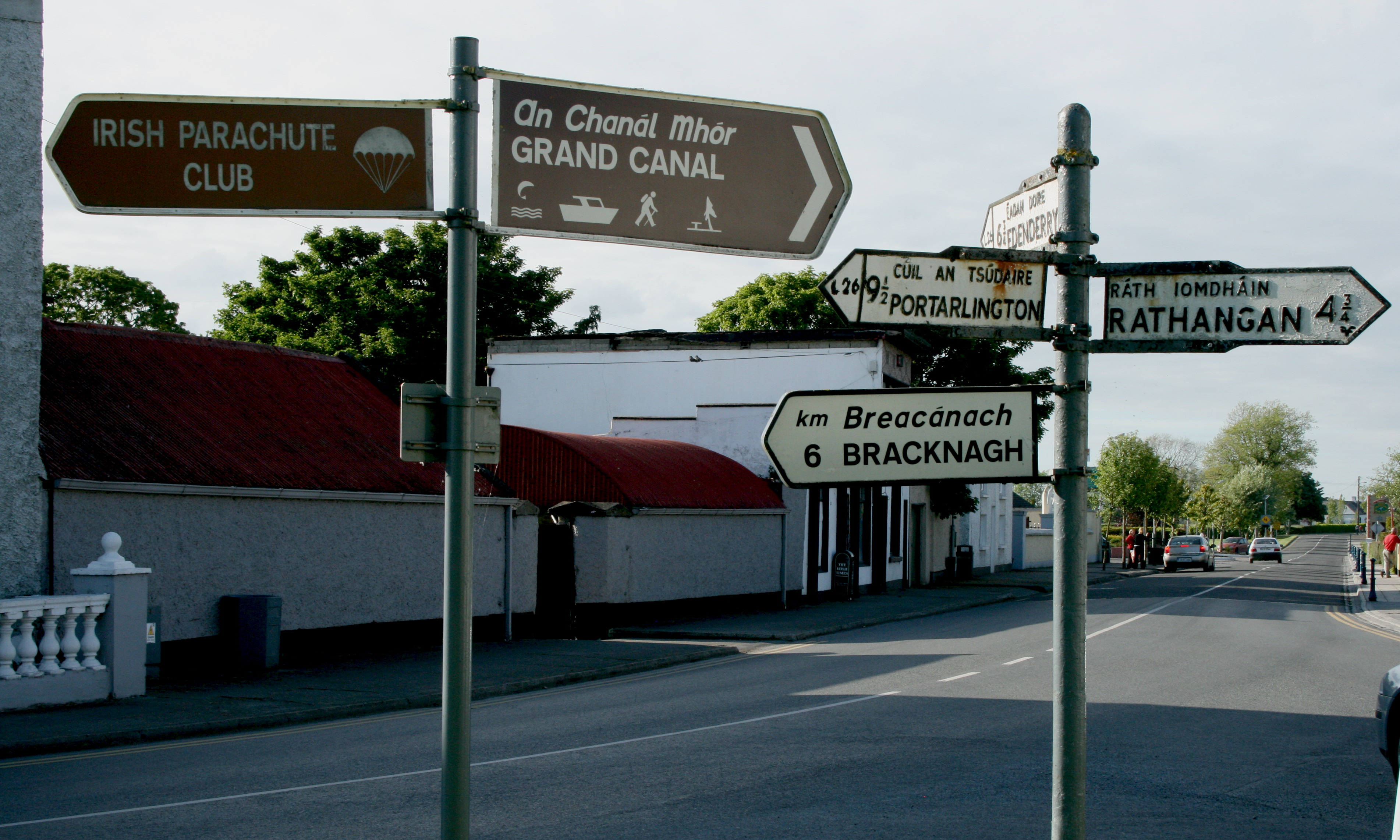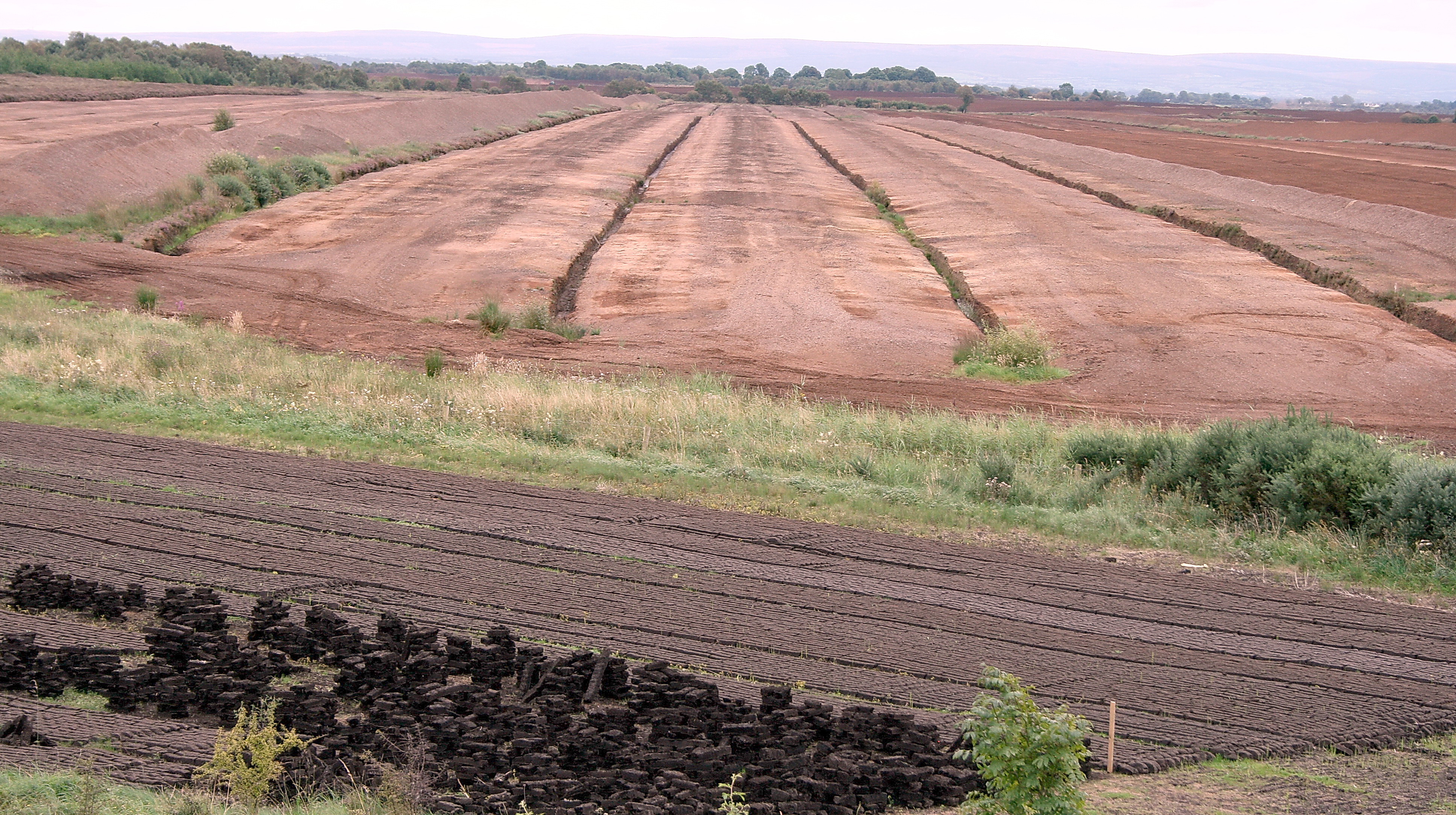|
Clonbulloge
Clonbullogue or Clonbolloge () is a village in County Offaly, Ireland. Location The village is located at the junction of the R401 and R442 regional roads. The ''Figile River'' runs through the village under the R442 near its confluence with the ''Philipstown River''. Between the village and Edenderry, 11 km to the north, lies the Bog of Allen. Clonbullogue is located near the point where three counties—Offaly, Laois and Kildare meet. The village is on an island of pasture land in the bog of Allen. The area is marked on the Cottonian map 1653 of Leix & Offaly as Clanbolg. In the 1659 Census, Robert Shallcross was listed as the titled person in the area. In 1679, Charles II granted this area to the Purefoy family and for a time the village was called Purefoy's Place. In 1798, the village was burned—the only part of Offaly to suffer this fate during the Rebellion. Two of the Wexford leaders, Colonel Anthony Perry and Father Mogue Kearns were captured here and were ... [...More Info...] [...Related Items...] OR: [Wikipedia] [Google] [Baidu] |
R401 Road (Ireland)
The R401 road is a regional road in Ireland, linking Kinnegad in County Meath to Kildare town in County Kildare. The total length of the R401 is . Route The official description of the R401 from the ''Roads Act 1993 (Classification of Regional Roads) Order 2012'' '' Irish Statute Book''. 2012-02-28. reads: :R401: Kinnegad, County Westmeath — Edenderry, County Offaly — Kildare Between its junction with R148 at Rossan in the county of [...More Info...] [...Related Items...] OR: [Wikipedia] [Google] [Baidu] |
Figile River
The Figile River (; ga, Abhainn Fhiodh Gaibhle) is a river in eastern Ireland. Name The earliest recorded name is ''Fidgable''/''Fid nGabli'', meaning "Gabul's Wood", recorded in the Book of Leinster and the Metrical Dindshenchas, both c. 1160. It is also mentioned in Buile Shuibhne ("Suibhne's Frenzy", 12th century) as ''Fiodh Gaibhle'', a site of refuge for the maddened Suibhne where he lived for a year, eating holly berries and acorns and drinking from ''uisci na Gabhla'' ("Gabul's waters"). The Anglicisation ''Fegowly'' first appears in the 17th century, becoming ''Feagile'' on Alex Taylor's 1783 map and ''Figile'' on the 1843 Ordnance Survey map. It was here that Fionn Mac Cumhaill is said to have been concealed by his mother Muirne from his family's enemies and brought up by her sisters deep in the woods after the killing of his father. Course The Figile River begins at the union of the Crabtree and Cushaling rivers, near the County Kildare-County Offaly border. It meet ... [...More Info...] [...Related Items...] OR: [Wikipedia] [Google] [Baidu] |
Provinces Of Ireland
There have been four Provinces of Ireland: Connacht (Connaught), Leinster, Munster, and Ulster. The Irish language, Irish word for this territorial division, , meaning "fifth part", suggests that there were once five, and at times Kingdom_of_Meath, Meath has been considered to be the fifth province; in the medieval period, however, there were often more than five. The number of provinces and their delimitation fluctuated until 1610, when they were permanently set by the English administration of James VI and I, James I. The provinces of Ireland no longer serve administrative or political purposes but function as historical and cultural entities. Etymology In modern Irish language, Irish the word for province is (pl. ). The modern Irish term derives from the Old Irish (pl. ) which literally meant "a fifth". This term appears in 8th-century law texts such as and in the legendary tales of the Ulster Cycle where it refers to the five kingdoms of the "Pentarchy". MacNeill enumer ... [...More Info...] [...Related Items...] OR: [Wikipedia] [Google] [Baidu] |
1679 In Ireland
Events from the year 1679 in Ireland. Incumbent *Irish monarch, Monarch: Charles II of England, Charles II Events * Lismore Cathedral, Ireland, Lismore Cathedral (Church of Ireland) abandoned until 1749. Births *September 11 – Thomas Parnell, clergyman and poet (d.1718 in Ireland, 1718) *Anthony Duane, businessman in America (d.1747 in Ireland, 1747) Deaths *Sir George Hamilton, 1st Baronet of Donalong, soldier. References 1679 in Ireland, 1670s in Ireland 1679 by country, Ireland Years of the 17th century in Ireland {{Ireland-stub ... [...More Info...] [...Related Items...] OR: [Wikipedia] [Google] [Baidu] |
Irish Parachute Club, Clonbullogue - Geograph
Irish may refer to: Common meanings * Someone or something of, from, or related to: ** Ireland, an island situated off the north-western coast of continental Europe ***Éire, Irish language name for the isle ** Northern Ireland, a constituent unit of the United Kingdom of Great Britain and Northern Ireland ** Republic of Ireland, a sovereign state * Irish language, a Celtic Goidelic language of the Indo-European language family spoken in Ireland * Irish people, people of Irish ethnicity, people born in Ireland and people who hold Irish citizenship Places * Irish Creek (Kansas), a stream in Kansas * Irish Creek (South Dakota), a stream in South Dakota * Irish Lake, Watonwan County, Minnesota * Irish Sea, the body of water which separates the islands of Ireland and Great Britain People * Irish (surname), a list of people * William Irish, pseudonym of American writer Cornell Woolrich (1903–1968) * Irish Bob Murphy, Irish-American boxer Edwin Lee Conarty (1922–1961) * Irish McCal ... [...More Info...] [...Related Items...] OR: [Wikipedia] [Google] [Baidu] |
Fionn MacCumhaill
Fionn mac Cumhaill ( ; Old and mga, Find or ''mac Cumail'' or ''mac Umaill''), often anglicized Finn McCool or MacCool, is a hero in Irish mythology, as well as in later Scottish and Manx folklore. He is leader of the ''Fianna'' bands of young roving hunter-warriors, as well as being a seer and poet. He is said to have a magic thumb that bestows him with great wisdom. He is often depicted hunting with his hounds Bran and Sceólang, and fighting with his spear and sword. The tales of Fionn and his ''fiann'' form the Fianna Cycle or Fenian Cycle (''an Fhiannaíocht''), much of it narrated by Fionn's son, the poet Oisín. Etymology In Old Irish, finn/find means "white, bright, lustrous; fair, light-hued (of complexion, hair, etc.); fair, handsome, bright, blessed; in moral sense, fair, just, true". It is cognate with Primitive Irish ''VENDO-'' (found in names from Ogam inscriptions), Welsh ''gwyn'', Cornish ''gwen'', Breton ''gwenn'', Continental Celtic and Common Brittoni ... [...More Info...] [...Related Items...] OR: [Wikipedia] [Google] [Baidu] |
Croghan Hill
Croghan Hill ( or ''Brí Éile'') is a hill with a height of in County Offaly, Ireland. The remains of an extinct volcano, it rises from the Bog of Allen and dominates the surrounding plains. Historically known as ''Brí Éile'', it is mentioned in Irish mythology and is traditionally seen as a sacred hill. On the summit is an ancient pagan burial mound with panoramic views, which reputedly became the inauguration site of the kings of Uí Failghe. On the eastern slope is an old graveyard and the remains of a medieval church, while at the western foot of the hill is the remains of a medieval settlement, church and castle. An ancient bog body, Old Croghan Man, was found nearby. The village of Croghan is at the southern foot of the hill. Archaeology and myth Croghan Hill is traditionally seen as a sacred place. [...More Info...] [...Related Items...] OR: [Wikipedia] [Google] [Baidu] |
Bord Na Móna
Bord na Móna (; English: "The Peat Board"), is a semi-state company in Ireland, created in 1946 by the Turf Development Act 1946. The company began developing the peatlands of Ireland with the aim to provide economic benefit for Irish Midland communities and achieve security of energy supply for the recently formed Irish Republic. The development of peatlands involved the mechanised harvesting of peat, which took place primarily in the Midlands of Ireland. Over the years, Bord na Móna has expanded and diversified its portfolio of businesses to include biomass procurement and supply, power generation (peat based and renewable), waste recovery, domestic fuel products and professional and consumer horticulture products. In 2015, the company announced that the harvesting of peat for power generation is to be "phased out" by 2030, at which point the company would complete its transition to new sustainable businesses located across its bogs and landholding. The new sustainable busi ... [...More Info...] [...Related Items...] OR: [Wikipedia] [Google] [Baidu] |
Irish Rebellion Of 1798
The Irish Rebellion of 1798 ( ga, Éirí Amach 1798; Ulster-Scots: ''The Hurries'') was a major uprising against British rule in Ireland. The main organising force was the Society of United Irishmen, a republican revolutionary group influenced by the ideas of the American and French revolutions: originally formed by Presbyterian radicals angry at being shut out of power by the Anglican establishment, they were joined by many from the majority Catholic population. Following some initial successes, particularly in County Wexford, the uprising was suppressed by government militia and yeomanry forces, reinforced by units of the British Army, with a civilian and combatant death toll estimated between 10,000 and 50,000. A French expeditionary force landed in County Mayo in August in support of the rebels: despite victory at Castlebar, they were also eventually defeated. The aftermath of the Rebellion led to the passing of the Acts of Union 1800, merging the Parliament of Ireland ... [...More Info...] [...Related Items...] OR: [Wikipedia] [Google] [Baidu] |


_(14750481494).jpg)

